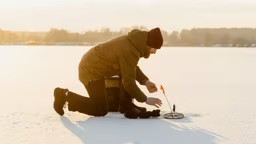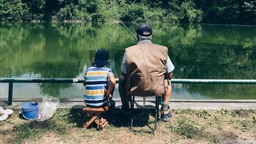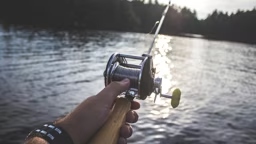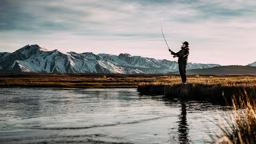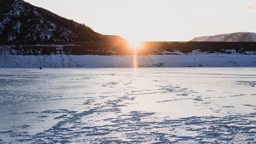

During late winter, ice starts deteriorating, getting softer on the inside first, so always think safety first when venturing out. If the ice looks kind of black, then it’s getting weaker. Wear a life jacket and always fish with a buddy. Beyond that, remember these tips when fishing for crappie, catfish, walleye and bass in late winter.
See also What You Need to Know About PFDs
Crappie
As the ice gets thinner, crappie sometimes go into a feeding frenzy. More light penetrates through and causes the food supply to start increasing. Higher oxygen levels also stir them to feeding. Crappie is also one of the first fish species to spawn after ice out, so look for them near weed edges or structure.
Catfish
Not many anglers think about trying for catfish during late winter, but those ice-fishing for panfish are often surprised by the hefty weight of a large catfish on light tackle. Whether fishing on ice or open water in late winter, use a minnow or cut bait on the bottom and don’t move it. Sometimes, catfish suspend in the water if shad are around; use minnows, jigs or spoons to catch them.
Walleye
In late-winter/early spring, when the water reaches the 40°F range, walleye may start moving toward and holding in their spawning areas. In rivers, they generally move upstream or gather in mass downstream where water is calm. In lakes, they head toward traditional spawning shoals or tributaries. Walleyes are hungry now and looking for their last nutrition before the rigors of the spawn. But natural food supplies are low, and they can’t afford to be finicky. In addition to being vulnerable to a properly presented bait, the females are at their heaviest, laden with eggs and a maximum store of fat from winter.
Bass
Typically, bass fishing during late winter means a few quality fish, but not a large quantity. By late winter, depending on where you live, the cold water has slowed a bass’s metabolism way down, so that means you’ll have to drag jigs and plastics slowly on the bottom if you want to lure them.
See also Frosty Fishing
Many anglers think that fish are lethargic and not very motivated during late winter months. They use a smaller bait to encourage fish to bite, but as a result, all they catch are small fish. Try using larger bait to attract bigger fish.
Larry Whiteley hosts the award-winning Bass Pro Shops Outdoor World Radio Show.



